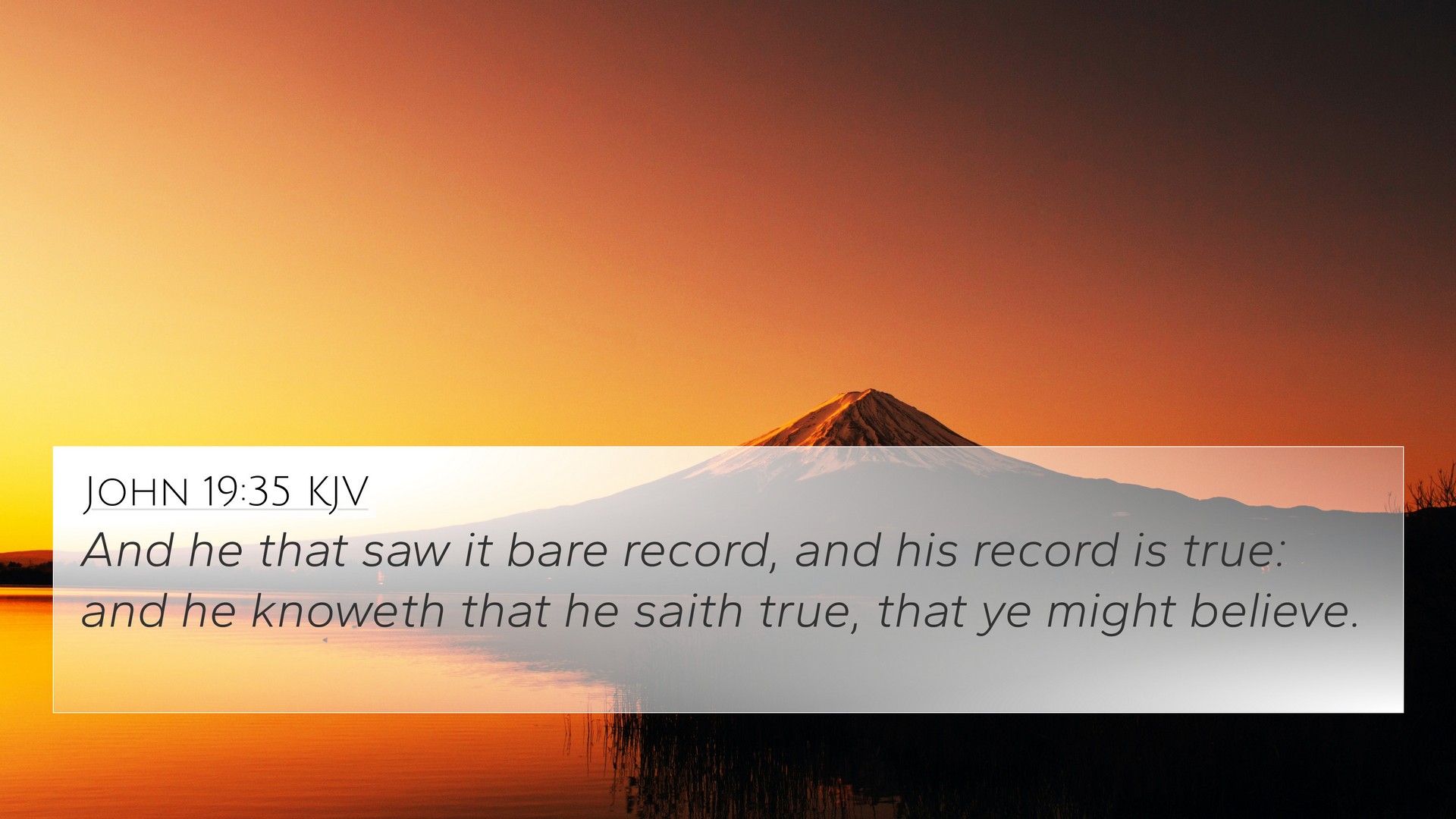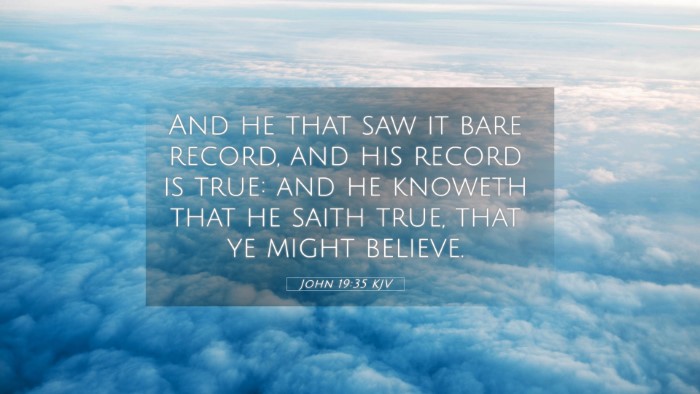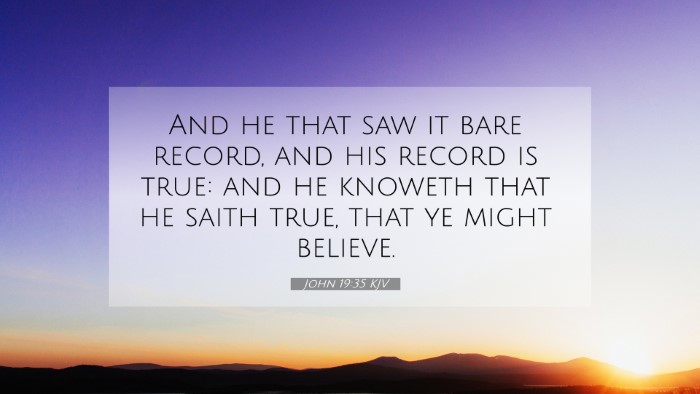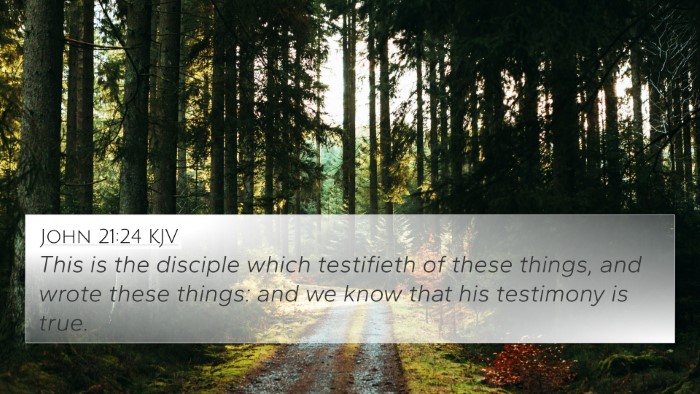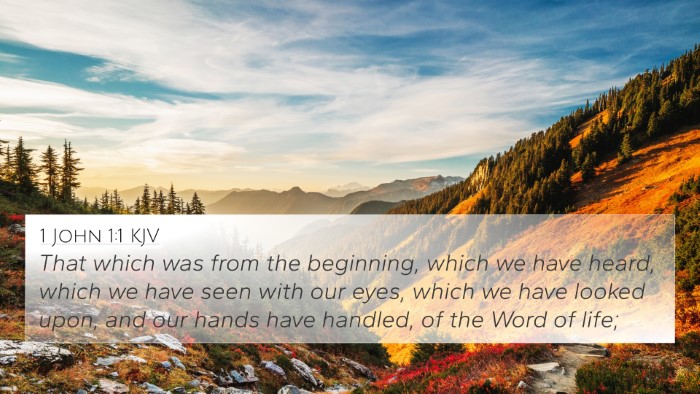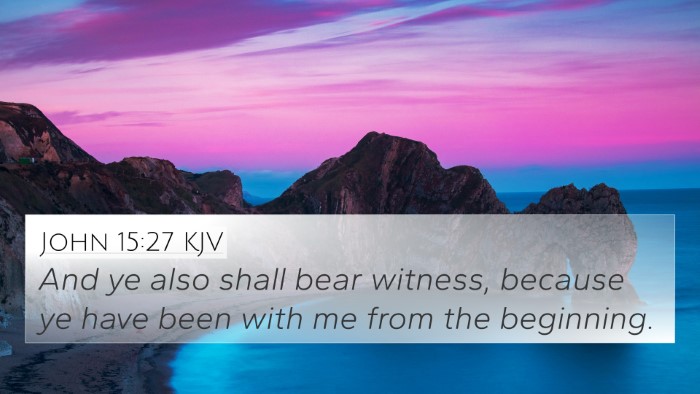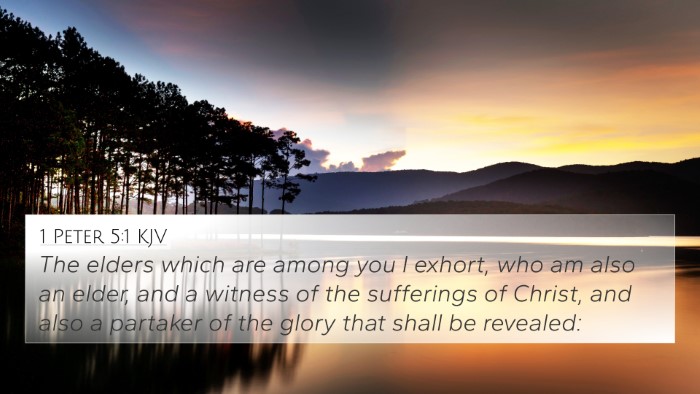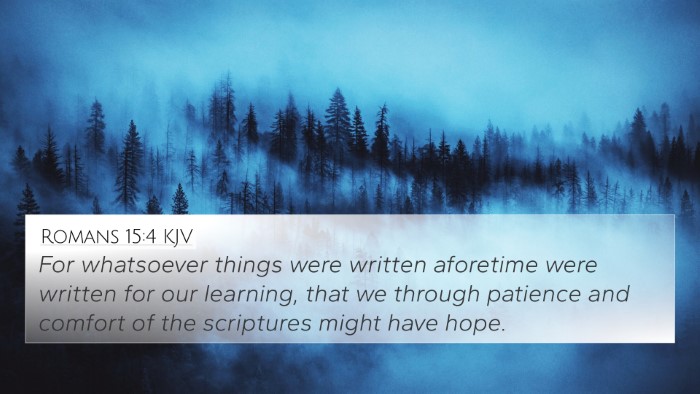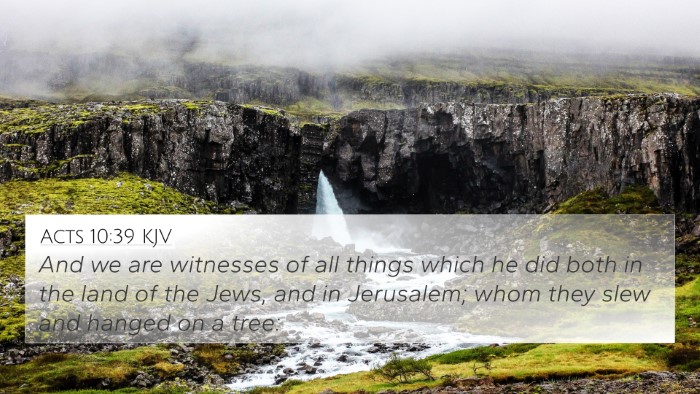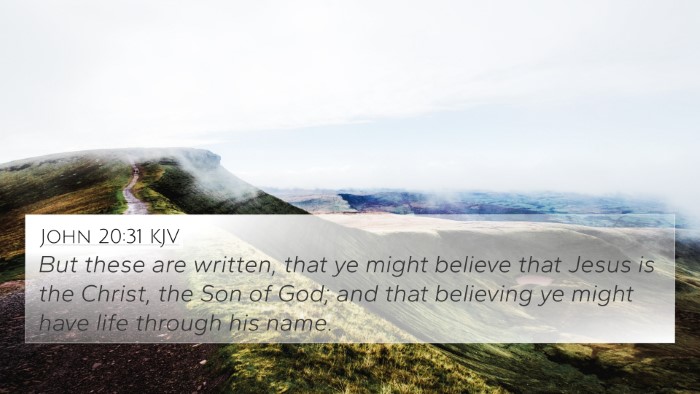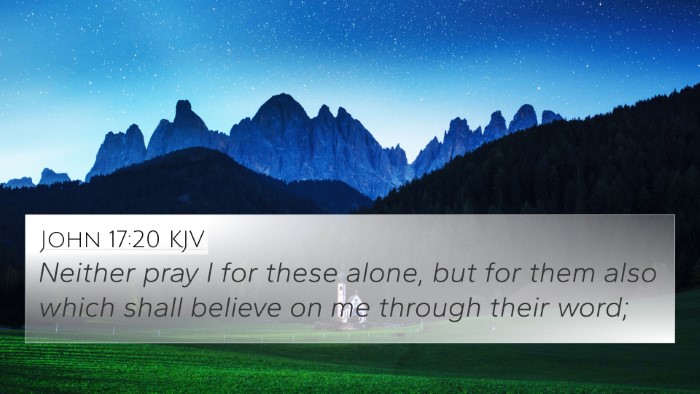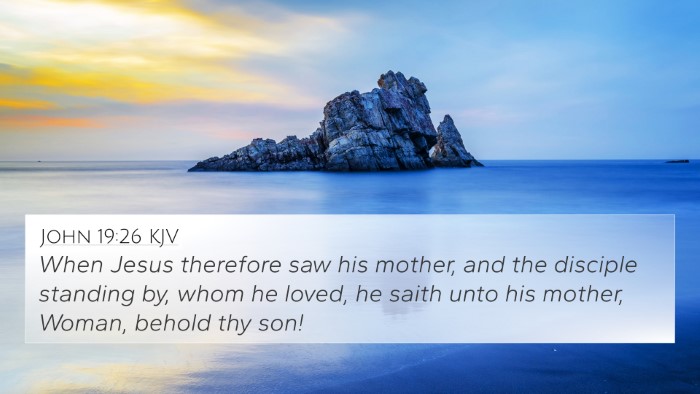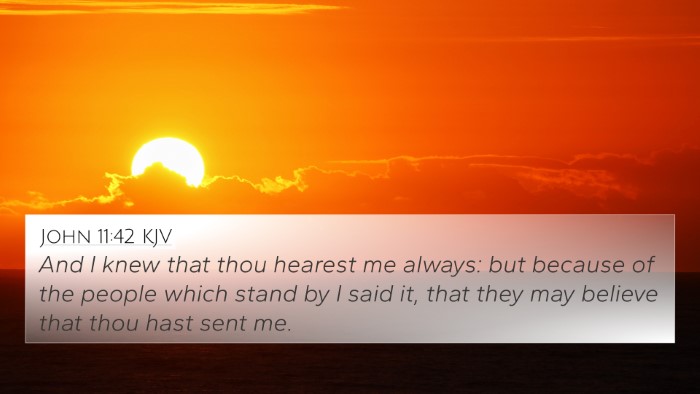Understanding John 19:35
Verse: "And he that saw it bare record, and his record is true: and he knoweth that he saith true, that ye might believe." (John 19:35)
Summary of Meaning
This verse emphasizes the eyewitness account of Jesus' crucifixion, provided by John, the author of the Gospel. It serves to affirm the authenticity and reliability of the testimony given, which is crucial for the belief of the readers. By asserting that the record is true, John encourages readers to trust in the account of Jesus' death and the significance it holds for their faith.
Commentary Insights
Matthew Henry's Commentary
Matthew Henry highlights the importance of testimony in establishing truth. John asserts that his witness is not only for his own curiosity but serves a greater purpose — to lead others to faith. This reflects the evangelistic aspect of writing the Gospel; the aim is that readers might believe in Jesus as the Messiah, recognizing the fulfillment of prophecy through His death.
Albert Barnes' Notes
Barnes notes the historical accuracy of John's account. He emphasizes the qualifications of the witness — John was present at the crucifixion and therefore provides a credible narrative. This focus on firsthand testimony reinforces the seriousness of the event and its theological implications, as the crucifixion is central to the Christian faith and understanding of redemption.
Adam Clarke’s Commentary
Clarke points out that John’s declaration aims to bolster the faith of believers by assuring them that the core events of Christ's suffering and death are not fabrications but are rooted in reality. Additionally, Clarke reflects on the spiritual significance of this witness, suggesting that the truth of the cross is essential for salvation and the understanding of God’s grace.
Cross-References to John 19:35
- John 1:14: "And the Word was made flesh, and dwelt among us, (and we beheld his glory, the glory as of the only begotten of the Father,) full of grace and truth." This connects to the incarnation of Christ and the purpose of revelation.
- 1 John 5:6-8: "This is he that came by water and blood, even Jesus Christ; not by water only, but by water and blood. And it is the Spirit that beareth witness, because the Spirit is truth." This reflects on the testimony of Jesus aligning with the truth of the Gospel.
- Luke 23:47: "Now when the centurion saw what was done, he glorified God, saying, Certainly this was a righteous man." This adds testimony from an outsider regarding the nature of Jesus.
- Matthew 27:54: "Now when the centurion, and they that were with him, watching Jesus, saw the earthquake, and those things that were done, they feared greatly, saying, Truly this was the Son of God." Affirms acknowledgment of Jesus' divine identity at the crucifixion.
- John 20:30-31: "And many other signs truly did Jesus in the presence of his disciples, which are not written in this book: But these are written, that ye might believe that Jesus is the Christ, the Son of God; and that believing ye might have life through his name." This underscores John's purpose in writing the Gospel.
- Romans 10:14-17: "How then shall they call on him in whom they have not believed? And how shall they believe in him of whom they have not heard? and how shall they hear without a preacher?" Relates to the necessity of testimony for faith.
- Revelation 1:2: "Who bare record of the word of God, and of the testimony of Jesus Christ, and of all things that he saw." Links to the theme of witness throughout Scripture.
Thematic Bible Verse Connections
The verse not only highlights the significance of bearing witness but also brings attention to the broader narrative of faith and belief established throughout the New Testament. The connections laid out here facilitate a better understanding of how the themes of truth, testimony, and belief intertwine in biblical text. Through cross-referencing, one can gain greater insights into the complexities of theological truths that shape Christian doctrine.
Tools for Bible Cross-Referencing
Utilizing tools and resources for Bible cross-referencing is essential for deeper study and understanding of connections between verses. Here are some recommendations:
- Bible Concordance
- Bible Cross-Reference Guide
- Cross-Reference Bible Study
- Bible Reference Resources
- Bible Chain References
How to Use Bible Cross-References
To effectively engage in cross-referencing, consider the following methods:
- Identify key themes or words in the initial verse.
- Search for those themes or words within the Bible using a concordance.
- Compare how the themes are presented in different books of the Bible.
- Reflect on the theological implications of each verse in relation to the primary verse.
- Document your findings for future study or sermon preparation.
Conclusion
John 19:35 serves as a crucial verse within the Gospel of John, emphasizing the importance of witness and the validation of faith through recorded truth. By examining this verse through public domain commentaries and connecting it with related Scripture, believers can deepen their understanding of the events surrounding Christ's crucifixion and ultimately strengthen their faith. Encouraging the practice of cross-referencing, thematic connections, and utilizing reference tools can enhance one’s Bible study, leading to a richer interpretation of biblical texts.
